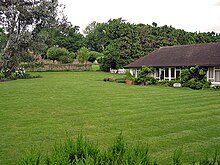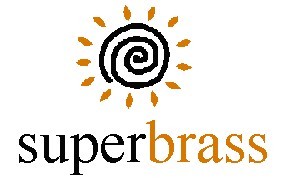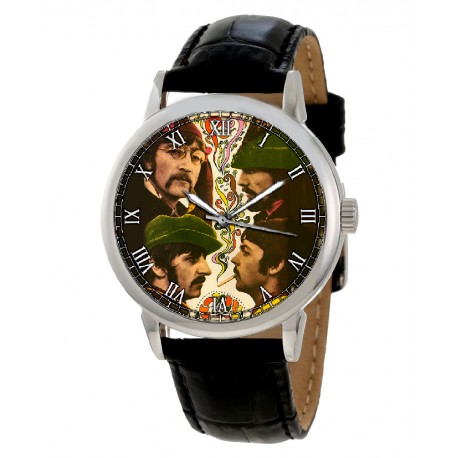No products
Pop & Rock Art Watches
New products
-

Amedeo Modigliani, Seated Nude, 1918, 34 mm solid Brass Tank Watch
33 mm solid brass casing with stainless steel back premium 2040 quartz...
$ 142.63 -

Tintin Professor Calculus Savate! Solid Brass Large 40 mm Gold finition
a very interesting handmade artisanale graphic art collectible wrist...
$ 158.11 -

Return of President Donald Trump. Make America Great Again Wrist Watch. Classic Americana!
Large Format Gents Stainless Steel Wrist Watch with Premium Quartz...
$ 145.89 -

Casino Roulette Wheel Monte Carlo Original Gambling Art Shiny Metallic Dial Solid Brass 40 mm Watch
40 mm large format solid brass casing with stainless steel back....
$ 137.74 -

Proud To Be An Eagle Scout, High Quality Solid Brass Boy Scouts 40 mm Wrist Watch
40 mm solid brass casing with stainless steel back premium 2040 quartz...
$ 137.74
The Beatles White Album Era Collectible Hippie Yogi Art Beatlemania Wrist Watch
WAT-BEA02
New product
- Premium Citizen 2040 quartz movement.
- 40 mm large size heavy brass case.
- Rubberized Leather band.
- Unique Collectible Limited Edition Handmade Watches.
More info
By 1968, the Beatles had achieved commercial and critical success. The group's previous album, Sgt. Pepper's Lonely Hearts Club Band, was number one in the UK the previous year and charted for 27 weeks, selling 250,000 copies in the first week after release.[1] Time magazine had written in 1967 that Sgt. Pepper's constituted a "historic departure in the progress of music – any music,"[2] while the American writer Timothy Leary thought that the band were prototypes of "evolutionary agents sent by God, endowed with mysterious powers to create a new human species."[3] The band received a negative critical response for the film Magical Mystery Tour, but fan response was nevertheless positive.[4]

Most of the songs for The Beatles were written during a Transcendental Meditation course with Maharishi Mahesh Yogi in Rishikesh, India, between February and April 1968.[5][6] The retreat involved long periods of meditation, conceived by the band as a spiritual respite from all worldly endeavours – a chance, in John Lennon's words, to "get away from everything."[7] Both Lennon and Paul McCartney quickly re-engaged themselves in songwriting, often meeting "clandestinely in the afternoons in each other's rooms" to review their new work."[8] "Regardless of what I was supposed to be doing," Lennon would later recall, "I did write some of my best songs there."[9] AuthorIan MacDonald said Sgt Pepper was "shaped by LSD",[10] but the Beatles took no drugs with them to India aside from marijuana, and their clear minds helped the group with their songwriting.[11] The stay in Rishikesh proved especially fruitful for George Harrison as a songwriter, coinciding with his re-engagement with the guitar after two years studying the sitar.[12] The musicologist Walter Everett likens Harrison's development as a composer in 1968 to that of Lennon and McCartney five years before, although he notes that Harrison became "privately prolific", given his customary junior status in the group.[13]
The Beatles left Rishikesh before the end of the course. Ringo Starr was the first to leave, as he could not stomach the food;[14] McCartney departed in mid-March,[11] while Harrison and Lennon were more interested in Indian religion and remained until April.[11] According to the author Geoffrey Giuliano, Lennon left Rishikesh because he felt personally betrayed after hearing rumours that the Maharishi had behaved inappropriately towards women who accompanied the Beatles to India,[15][16] though McCartney and Harrison later discovered this to be untrue[17] and Lennon's wife Cynthia reported there was "not a shred of evidence or justification".[18][b]
Collectively, the group wrote around 40 new compositions in Rishikesh, 26 of which would be recorded in very rough form at Kinfauns, Harrison's home in Esher, in May 1968. Lennon wrote the bulk of the new material, contributing 14 songs.[11] Lennon and McCartney brought home-recorded demos to the session, and worked on them together. Some home demos and group sessions at Kinfauns were later released on the 1996 compilation Anthology 3.[19]
Recording[edit]

The Beatles was recorded between 30 May and 14 October 1968, largely at Abbey Road Studios in London, with some sessions at Trident Studios.[20] The group block-booked time at Abbey Road through to July,[21] and their times at Rishikesh were soon forgotten in the atmosphere of the studio, with sessions occurring at irregular hours.[22] The group's self-belief that they could do anything led to the formation of a new multimedia business corporation Apple Corps, an enterprise that drained the group financially with a series of unsuccessful projects.[23] The open-ended studio time led to a new way of working out songs. Instead of tightly rehearsing a backing track, as had happened in previous sessions, the group would simply record all the rehearsals and jamming, then add overdubs to the best take. Harrison's song "Not Guilty" was left off the album despite recording 102 takes.[24]
The sessions for The Beatles marked the first appearance in the studio of Lennon's new domestic and artistic partner, Yoko Ono, who accompanied him to Abbey Road to work on "Revolution 1"[25] and who would thereafter be a more or less constant presence at all Beatles sessions.[26] Ono's presence was highly unorthodox, as prior to that point, the Beatles had generally worked in isolation.[27] McCartney's girlfriend at the time, Francie Schwartz, was also present at some sessions,[28] as were the other two Beatles' wives, Pattie Harrison and Maureen Starkey.[29]
During the sessions, the band upgraded from 4-track recording to 8-track. As work began, Abbey Road Studios possessed, but had yet to install, an 8-track machine that had supposedly been sitting in a storage room for months. This was in accordance with EMI's policy of testing and customising new gear extensively before putting it into use in the studios. The Beatles recorded "Hey Jude" and "Dear Prudence" at Trident because it had an 8-track recorder.[30] When they learned that EMI also had one, they insisted on using it, and engineers Ken Scott and Dave Harries took the machine (without authorisation from the studio chiefs) into Abbey Road Studio 2 for the band's use.[31]
The author Mark Lewisohn reports that the Beatles held their first and only 24-hour session at Abbey Road near the end of the creation of The Beatles, which occurred during the final mixing and sequencing for the album. The session was attended by Lennon, McCartney and producer George Martin. Unlike most LPs, there was no customary three-second gap between tracks, and the master was edited so that songs segued together, via a straight edit, a crossfade, or an incidental piece of music.[32]
Personal issues[edit]

The studio efforts on The Beatles captured the work of four increasingly individuated artists who frequently found themselves at odds. Lewisohn notes that several backing tracks do not feature the full group, and overdubs tended to be limited to whoever wrote the song.[33] Sometimes McCartney and Lennon would record simultaneously in different studios, each using different engineers.[34] Late in the sessions, Martin, whose influence over the band had waned, spontaneously left to go on holiday, leavingChris Thomas in charge of production.[35] Lennon's devotion to Ono over the other Beatles, and the pair's addiction to heroin, made working conditions difficult as he became prone to bouts of temper.[36]
Recording engineer Geoff Emerick, who had worked with the group since Revolver in 1966, had become disillusioned with the sessions. At one point, while recording "Ob-La-Di, Ob-La-Da", Emerick overheard Martin criticising McCartney's lead vocal performance, to which McCartney replied, "Well you come down and sing it".[37] On 16 July, Emerick announced that he was no longer willing to work with them and left.[37]
Within the band, according to the author Peter Doggett, "the most essential line of communication ... between Lennon and McCartney" had been broken by Ono's presence on the first day of recording.[38] While echoing this view, Beatles biographer Philip Norman comments that, from the start, each of the group's two principal songwriters shared a mutual disregard for the other's new compositions: Lennon found McCartney's songs "cloyingly sweet and bland", while McCartney viewed Lennon's as "harsh, unmelodious and deliberately provocative".[39] In a move that Lewisohn highlights as unprecedented in the Beatles' recording career, Harrison and Starr chose to distance themselves part-way through the project,[33] flying to California on 7 June so that Harrison could film his scenes for the Ravi Shankar documentary Raga.[40] Lennon, McCartney and Harrison's involvement in individual musical projects outside the band during 1968 was further evidence of the group's fragmentation.[41] In Lennon's case, the cover of his experimental collaboration with Ono, Two Virgins, featured the couple fully naked – a gesture that his bandmates found bewildering and unnecessary.[42]
On 20 August, Lennon and Starr, working on overdubs for "Yer Blues" in Studio 3, visited McCartney in Studio 2, where he was working on "Mother Nature's Son". The positive spirit of the session disappeared immediately, and the engineer Ken Scott later claimed: "you could cut the atmosphere with a knife".[34] On 22 August, during the session for "Back in the U.S.S.R.", Starr abruptly left the studio,[43] feeling that his role in the group was peripheral compared to the other members, and was upset at McCartney's constant criticism of his drumming on the track.[44][45] Abbey Road staff later commented that Starr frequently turned up to the sessions and sat waiting in the reception area for the others to turn up.[46] In his absence, McCartney played the drums on "Dear Prudence". Lewisohn also reports that, in the case of "Back in the U.S.S.R.", the three remaining Beatles each made contributions on bass and drums, with the result that those parts may be composite tracks played by Lennon, McCartney or Harrison.[46]
Lennon, McCartney and Harrison pleaded with Starr to reconsider. He duly returned on 5 September to find his drum kit decorated with flowers,[47] a welcome-back gesture from Harrison.[48] McCartney described the sessions for The Beatles as a turning point for the group, saying "there was a lot of friction during that album. We were just about to break up, and that was tense in itself",[49] while Lennon later said "the break-up of the Beatles can be heard on that album".[50] Of the album's 30 tracks, only 16 have all four band members performing.[c]
Songs[edit]
The Beatles contains a wide range of musical styles, which the authors Barry Miles and Gillian Gaar each view as the most diverse of any of the group's albums.[65][66] These styles include rock and roll, blues, folk, country, reggae, avant-garde,[67] hard rock[68] and music hall.[69] The production aesthetic ensured that the album's sound was scaled-down and less reliant on studio innovation, relative to all the Beatles' releases since Revolver.[70] The author Nicholas Schaffner viewed this as reflective of a widespread departure from the LSD-inspired psychedelia of 1967, an approach that was initiated byBob Dylan and the Beach Boys and similarly adopted in 1968 by artists such as the Rolling Stones and the Byrds.[71] Edwin Faust of Stylus Magazine described The Beatles as "foremost an album about musical purity (as the album cover and title suggest). Whereas on prior Beatles albums, the band was getting into the habit of mixing several musical genres into a single song, on The White Album every song is faithful to its selected genre. The rock n' roll tracks are purely rock n' roll; the folk songs are purely folk; the surreal pop numbers are purely surreal pop; and the experimental piece is purely experimental."[72]
The only western instrument available to the group during their Indian visit was the acoustic guitar, and thus many of the songs on The Beatles were written and first performed on that instrument.[73] Some of these songs remained acoustic on The Beatles and were recorded solo, or only by part of the group (including "Wild Honey Pie",[74] "Blackbird",[75] "Julia",[76] "I Will"[77] and "Mother Nature's Son"[78]).
Side one[edit]
McCartney wrote "Back in the U.S.S.R." as a surreal parody of Chuck Berry's song "Back in the U.S.A."[74] A field recording of an aeroplane taking off and landing was used at the start of the track, and intermittently throughout it, while the backing vocals were sung by Lennon and Harrison in the style of the Beach Boys[46] at the request of Mike Love, who had accompanied the group to India.[79] The track became widely bootlegged in the Soviet Union and became an underground hit.[74] McCartney subsequently recorded a cover album the title of which, Снова в СССР, is Russian for "Back in the U.S.S.R."[80]
"Dear Prudence" was one of the songs recorded at Trident. The style is typical of the acoustic songs written in Rishikesh, using guitar arpeggios. Lennon wrote the track about Mia Farrow's sister Prudence, who rarely left her room during the stay in commitment to the meditation.[81]
"Glass Onion" was the first backing track recorded as a full band since Starr's brief departure. MacDonald claimed Lennon deliberately wrote the lyrics to mock fans who claimed to find "hidden messages" in songs, and referenced other songs in the Beatles catalogue – "The Walrus was Paul" refers back to "I Am the Walrus" (which itself refers to "Lucy in the Sky with Diamonds").[82] McCartney, in turn, overdubbed a recorder part after the line "I told you about the Fool on the Hill", as a deliberate parody of the earlier song.[83] A string section was added to the track in October.[83]
Lennon went straight to the piano and smashed the keys with an almighty amount of volume, twice the speed of how they'd done it before, and said "This is it! Come on!"
"Ob-La-Di, Ob-La-Da" was written by McCartney as a pastiche of ska music. The track took a surprising amount of time to complete, with McCartney demanding perfectionism that annoyed his colleagues.[52] Jimmy Scott, a friend of McCartney, suggested the title and played bongos on the initial take. He demanded a cut of publishing when the song was released, but the song was credited to "Lennon-McCartney".[85] After working for three days on the backing track, the work was scrapped and replaced with a new recording.[84] Lennon hated the song, calling it "granny music shit",[86] while engineer Richard Lush recalled that Starr disliked having to record the same backing track repetitively, and pinpoints this session as a key indication that the Beatles were going to break up.[84] McCartney attempted to remake the backing track for a third time, but this was abandoned after a few takes and the second version was used as the final mix.[84] The group, save for McCartney, had lost interest in the track by the end of recording, and refused to release it as a single. Marmalade recorded a version that became a number one hit.[85] In 2004, an online survey of 1,000 people in the UK by Mars ranked the song as the worst ever.[87]
McCartney recorded "Wild Honey Pie" on 20 August at the end of the session for "Mother Nature's Son". It is typical of the brief snippets of songs he recorded between takes during the album sessions.[74]
"The Continuing Story of Bungalow Bill" was written by Lennon after an American visitor to Rishikesh left for a few weeks to hunt tigers.[64] It was recorded as an audio vérité exercise, featuring vocal performances from almost everyone who happened to be in the studio at the time. Ono sings one line and co-sings another, while Chris Thomas played the mellotron, including improvisations at the end of the track.[88] The opening flamenco guitar flourish was a recording included in the Mellotron's standard tape library.[89]
"While My Guitar Gently Weeps" was written by Harrison during a visit he made to his parents' home in Cheshire.[90] He first recorded the song as a solo performance, on acoustic guitar, on 25 July – a version that remained unreleased until Anthology 3.[56] He was unhappy with the group's first attempt to record the track, and so invited his friend Eric Clapton to come and play on it. Clapton was unsure about guesting on a Beatles record, but Harrison said the decision was "nothing to do with them. It's my song."[91] Clapton's solo was treated with automatic double tracking to attain the desired effect; he gave Harrison the guitar he used, which Harrison later named "Lucy".[92][d]
"Happiness Is a Warm Gun" evolved out of song fragments that Lennon wrote in Rishikesh. According to MacDonald, this working method was inspired by the Incredible String Band's songwriting.[60] The basic backing track ran to 95 takes, due to the irregular time signatures and variations in style throughout the song. The final version consisted of the best half of two takes edited together.[94] Lennon later described the song as one of his favourites,[95] while the rest of the band found the recording rejuvenating, as it forced them to re-hone their skills as a group playing together to get it right.[96] Apple's press officer Derek Taylor made an uncredited contribution to the song's lyrics.[97]
Side two[edit]
McCartney got the title of "Martha My Dear" from his sheepdog, but the lyrics are otherwise unrelated.[98] The entire track is played by him backed with session musicians, and features no other Beatles. Martin composed a brass band arrangement for the track.[99]
"I'm So Tired" was written in India when Lennon was having difficulty sleeping.[63] It was recorded at the same session as "The Continuing Story of Bungalow Bill".[88] The lyrics make reference to Walter Raleigh, calling him a "stupid get" for introducing tobacco to Europe;[e] while the track ends with Lennon mumbling "Monsieur, monsieur, how about another one?"[88] This became part of the Paul is Deadconspiracy theory, when fans claimed that when the track was reversed, they could hear "Paul is dead man, miss him miss him".[47]
"Blackbird" features McCartney solo, accompanying himself on acoustic guitar. According to Lewisohn, the ticking in the background is a metronome,[33] although Emerick recalls capturing the sound via a microphone placed beside McCartney's shoes.[101] The birdsong on the track was taken from the Abbey Road sound effects collection, and was recorded on one of the first EMI portable tape recorders.[33]
Harrison wrote "Piggies" as an attack on greed and materialism in modern society.[102] His mother and Lennon helped him complete the lyrics.[103] Thomas played harpsichord on the track, while Lennon supplied a tape loop of pigs grunting.[104]
"Rocky Raccoon" evolved from a jam session with McCartney, Lennon and Donovan in Rishikesh. The song was taped in a single session, and was one of the tracks that Martin felt was "filler" and only put on because the album was a double.[58]
"Don't Pass Me By" was Starr's first solo composition for the band;[105] he had been toying with the idea of writing a self-reflective song for some time, possibly as far back as 1963.[106] It went by the working titles of "Ringo's Tune" and "This Is Some Friendly". The basic track consisted of Starr drumming while McCartney played piano.[107] Martin composed an orchestral introduction to the song but it was rejected as being "too bizarre" and left off the album.[105] Instead, Jack Fallon played a bluegrass fiddle part.[108]
"Why Don't We Do It in the Road?" was written by McCartney in India after he saw two monkeys copulating in the street and wondered why humans were too civilised to do the same.[109] He played all the instruments except drums, which were contributed by Starr. The simple lyric was very much in Lennon's style, and Lennon was annoyed about not being asked to play on it. McCartney suggested it was "tit for tat" as he had not contributed to "Revolution 9".[110]
"I Will" was written and sung by McCartney, with Lennon and Starr accompanying on percussion.[77] In between numerous takes, the three Beatles broke off to busk some other songs. A snippet of a track known as "Can You Take Me Back?" was put between "Cry Baby Cry" and "Revolution 9",[83] while recordings of Cilla Black's hit "Step Inside Love" and a joke number, "Los Paranoias", were released onAnthology 3.[111]
"Julia" was the last track to be recorded for the album and features Lennon on solo acoustic guitar which he played in a style similar to McCartney's on "Blackbird".[76] This is the only Beatles song on which Lennon performs alone[112] and it was a tribute to his mother Julia Lennon, who was killed in 1958 in a road accident while Lennon was only seventeen, and the lyrics deal with the loss of his mother and his relationship with Ono, the "ocean child" referred to in the lyrics.[76] Ono helped with the lyrics, but the song was still credited to Lennon-McCartney as expected.[113]
Side three[edit]
According to McCartney, the authorship of "Birthday" was "50–50 John and me, made up on the spot and recorded all on the same evening".[114] He and Lennon were inspired to write the song after seeing the first UK showing of the rock'n'roll film The Girl Can't Help It on television, and sang the lead vocal in the style of the film's musical star, Little Richard.[59] After the Beatles had taped the track, Ono and Pattie Harrison added backing vocals.[94]
"Yer Blues" was written by Lennon in India. Despite meditating and the tranquil atmosphere, he still felt unhappy, which was reflected in the lyrics.[115] The style was influenced by the British Blues Boom of 1968, which included groups such as Fleetwood Mac and Chicken Shack.[57] The backing track was recorded in a small room next to the Studio 2 control room at Abbey Road. Unusually for a Beatles recording, the four-track source tape was edited directly, resulting in an abrupt cut-off at 3'17" into the start of another take (which ran into the fade out).[116][f]

McCartney wrote "Mother Nature's Son" in India, and worked on it in isolation from the other members of the band. He performed the track solo alongside a Martin-scored brass arrangement.[78]
"Everybody's Got Something to Hide Except Me and My Monkey" evolved from a jam session, and was originally untitled. The final mix was sped up by mixing the tape running at 43 hertz instead of the usual 50.[24] Harrison claimed the title came from one of the Maharishi's sayings (with "and my monkey" added later).[51]
"Sexy Sadie" was written as "Maharishi" by Lennon, shortly after he decided to leave Rishikesh.[55] In a 1980 interview, Lennon acknowledged that the Maharishi was the inspiration for the song: "I just called him 'Sexy Sadie'."[117]
"Helter Skelter" was written by McCartney and was initially recorded in July as a blues number. The initial takes were performed by the band live and included long passages during which they jammed on their instruments.[37] Because these takes were too long to practically fit on an LP, the song was shelved until September, when a new, shorter, version was made. By all accounts, the session was chaotic, but nobody dared suggest to any of the Beatles that they were out of control. Harrison reportedly ran around the studio while holding a flaming ashtray above his head, "doing an Arthur Brown".[118] The stereo version of the LP includes almost an extra minute of music compared to the mono, which culminates in Starr infamously shouting "I've got blisters on my fingers!"[118] Charles Manson was unaware that helter skelter is the British name for a spiral slide found on a playground or funfair, and assumed the track had something to do with hell. This was one of the key tracks that led Manson to believe the album had coded messages referring to apocalyptic war, and led to his movement of the same name.[55]
The final song on side three is Harrison's "Long, Long, Long", part of the <a href="https://en.w
Reviews
No customer reviews for the moment.




